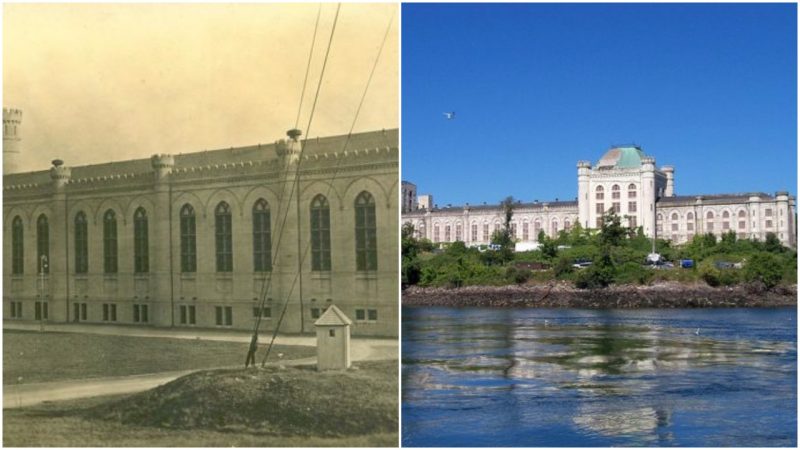Dubbed the “Alcatraz of the East,” the Portsmouth Naval Prison has been abandoned since the 1970s, but it stands as tall, imposing, and mysterious as ever.
Stationed at the far end of the Portsmouth Naval Shipyard on Seavey Island, right on the border of Maine and New Hampshire, the Portsmouth Naval Prison has survived the darkest years imaginable: two World Wars, the Korean War, and the Vietnam War, and somehow still stands strong, showing no signs of surrendering.
But the building has created enough darkness on its own. Don’t be fooled by the prison’s seemingly appealing look from the outside. The real horrors came from the inside, which is how the place earned its formidable reputation as a dangerous and menacing spot, with a secretive nature.

Digging into its past, the prison’s history is nowhere near as dark as people say it is. More than that, the building’s foundations have their own story to tell, one that predates the prison, beginning years before it was actually built.
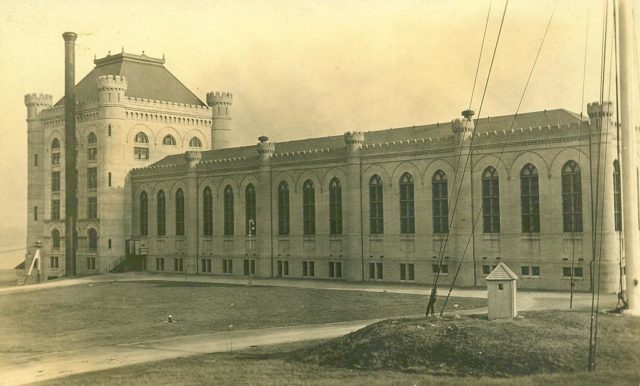
During the American Revolution, and then later, in the War of 1812, the island was the location of Fort Sullivan. After the fort was dismantled, the island became the home of Camp Long, which leads us to the construction of the Portsmouth Naval Prison.
When Camp Long was disassembled in 1901, the island was available for the construction of a brand new prison, more specifically a prison for convicted members of the Navy. It would eventually be extended to house Marines and Coast Guard inmates. As we know, the military has very strict rules and codes of conduct. And when a member of the military didn’t abide by those rules, he was sent to serve time here. The sentences were pretty severe, especially for deserters and those who committed an act of cowardice or fragging. But even small-time crimes like stealing could’ve gotten you at least eight years in Portsmouth penitentiary.
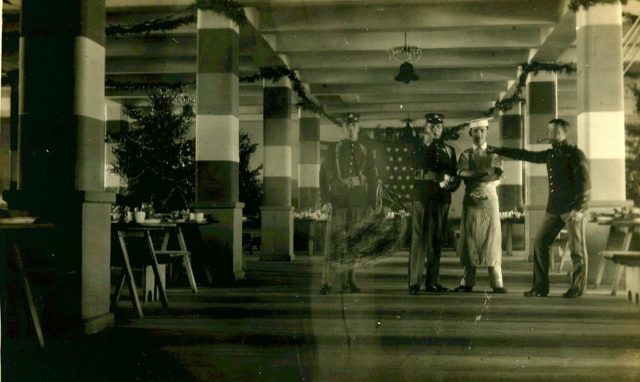
Seavey Island had the perfect conditions for a prison construction. It’s isolated and far from populated areas, and the strong currents made an escape from the island almost impossible. Simply, the place was an impenetrable fortress. Some people even said that the prison’s design was a fully accurate reproduction of a castle from medieval times. No wonder it was called the second Alcatraz. (Rumors circulated that the prison contained a dungeon, which ultimately proved false.)
Contrary to popular belief, Portsmouth was actually modeled after Leavenworth penitentiary in Kansas and Auburn Correctional Facility, New York, not Alcatraz.
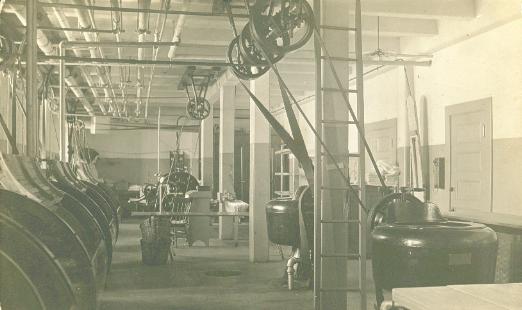
In 1908, almost immediately after construction was finished, the first prisoners were shipped in. At the time, Colonel Kelton was in charge of the facility. During World War I, the prison’s command was given to Lieutenant Commander Thomas Osborne, who, in order to inspect the living conditions and see what changes needed to be made, committed himself into Portsmouth undercover for a while.
By the end of the war, the penitentiary had a population of more than 2,000 inmates. According to Neli Novello, the producer of a documentary called The Castle, in the first 10 years, the conditions in Portsmouth were pretty harsh: it had a tangled relationship between the guards and the inmates, a lot of criminal activity. and contraband.

Osborne managed to turn that around. With Roosevelt’s backing, he pushed for reforms, under the motto “Prisoners governing prisoners.” A basketball court, a gym, and a theater were added to the prison, as well as new programs and courses so that it would be easier for the prisoners to rejoin society after they had served their sentences.
But despite his progressive thinking and noble intentions, Osborne’s reforms met with a lot of backlash from higher up officials after World War I ended. Osborne was even forced to defend himself before the Justice Department, which he did successfully. Eventually, he was no longer able to handle the pressure, and he retired in 1921.
Today, however, what’s most know from the time of the Great War are not the Portsmouth reforms dispute. It is actually more of a Hollywood story concerning the young Humphrey Bogart. According to Novello, there were several reports claiming that Bogart was at the time stationed there. And he had a role of a “chaser”: escorting convicted sailors to the prison.
One story in particular is that once when Bogart escorted a prisoner from Boston, the inmate tried to escape. A struggle commenced between the two and the prisoner managed to take a hold of his gun and hit him on the lip with it.
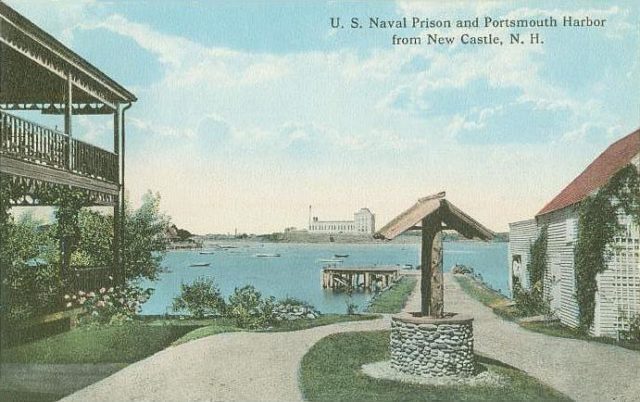
Whether this story is fact or fiction we will never know, but it is said to be responsible for creating the distinct “Bogart sound” of speaking. Nevertheless, it is accepted as truth and retold every time there is an arranged group tour at the prison.
Furthermore, the entire plot of the 1973 road-trip film The Last Detail involves the Jack Nicholson character escorting a convicted sailor to Portsmouth penitentiary.
In World War II, the prison’s population had almost doubled, surpassing 3,000 inmates. Two additional wings were built, on the northeast and southwest corner, in 1942 and 1943 respectively. In a survey made by the Boston Globe in 1944, 86 percent of prisoners that served time returned to military duty afterward. One of those prisoners was the future founder of Scientology, L. Ron Hubbard, who went on to become a Navy captain, training and leading a crew of former convicts.
When the war was over, Portsmouth housed the surrendering German crew of four U-boats. They were treated harshly while there, and the correctional officers looted all of their possessions. Reports say that the German commanding officer, Friedrich Steinhoff, was even pushed to the point of committing suicide. It was only after he was transferred to Charles Street Jail that he did it, slitting his wrists with broken glass. When officials found him, it was already too late. He died on his way to the Massachusetts General Hospital.
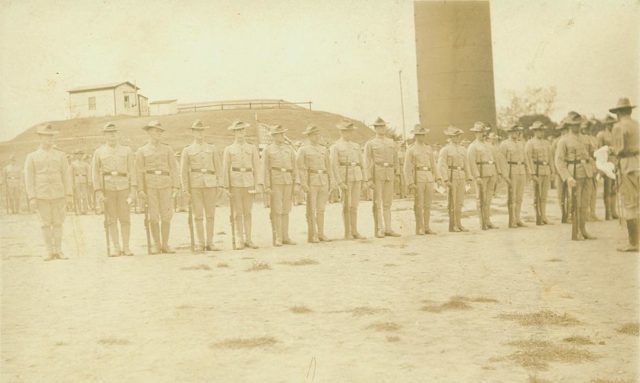
In 1974, near the end of the Vietnam War, it was decided that Portsmouth Prison was no longer needed. Rendered obsolete, it was decommissioned by the end of the year and the remaining 300 inmates were transferred to other correctional facilities. After 66 years, four wars, and over 83,000 prisoners who came and went, Portsmouth’s final chapter was written.
Now this gigantic building remains dormant, in a state of despair and entropy. All plans for redevelopment have so far had failed, and for whatever reason the prison’s demolition is out of the question. It is closed to the general public and the area is designated as toxic because the materials used to build Portsmouth (asbestos, lead paint, and other chemicals) are banned in the United States.
So we must wait and see what the future holds for this historic building. But no matter what, one thing is certain: Portsmouth Naval Prison cemented its place in American history. And whether all the stories told are true or not, now they’ve become legends that maintain Portsmouth’s reputation as a formidable place.
